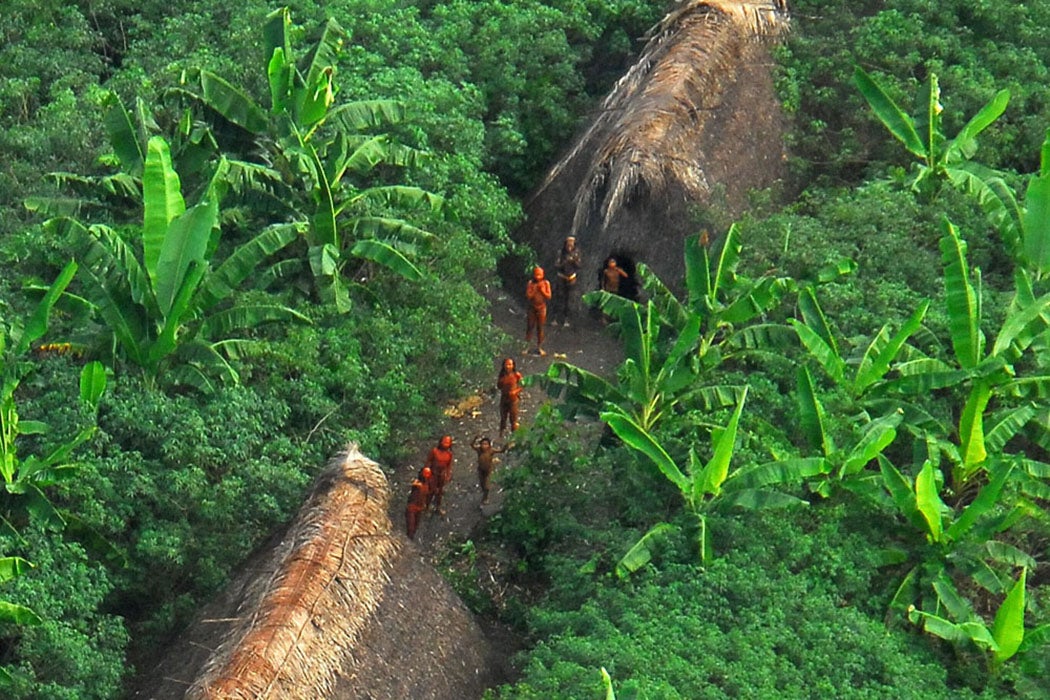In our fast-paced, hyperconnected world, the idea of navigating unarmed with mobile apps and wifi seems unthinkable. Yet, in South America, there is a raging fight to preserve the most rudimentary possible existence for a handful of uncontacted tribes in the Amazon.
In light of recent drone footage showing the first moving images of members of one of these uncontacted tribes, (a striking, minute-long video showing two small figures traversing the depths of the dense Amazon jungle) the importance of keeping our society and theirs separate—for their sake—has re-emerged in public discussion.
Back in 2008, scholar Katherine Ellison wrote about the importance of leaving the tribes uncontacted.
“In our own stressed-out age, it’s especially tempting to lionize, or at least protect, people who’ve never seen a lightbulb, yet preserve ancient knowledge of life saving medicinal plants,” writes Ellison. “Americans and Brazilians, who share a recent pioneer history, also understand the perils of contacting isolated Indians, who may be vulnerable to devastating diseases, alcoholism, and poverty.”
It would appear that many of the tribes agree. One report describes a man, known as the Man of the Hole, whose tribe was wiped out. He seems to prefer living completely alone, rejecting attempts at contact.
Ellison’s research supports this, as she writes, “The lost tribes also understand these risks, which is why those remaining in the wilderness do so by choice, according to [Ineke] Holtwijk, who made seven trips deep into the Amazon while researching her book. ‘They know that there is this big, strange-looking tribe that has powerful weapons and utensils and evil spirits that kill everyone’, she says. ‘They want nothing to do with us, so they remain in hiding.'”
Want more stories like this one?
Ellison reports that preserving the tribes is a national fight, met with resistance from even foreign governments. The existence of these tribes may be a sociological wonder, but it is a deterrent to development of a region rich in raw materials. The Brazilian government has had to defend themselves against accusations that these tribes did not exist, and that they were a fabricated excuse to prevent development in the region.
Ellison interviewed advocate Sydney Possuelo, who she described as “a cranky Amazon explorer who looks like he just walked off the set of an Indiana Jones movie.” She writes that “Possuelo has made it his life’s work to travel deep into the Amazon to document previously uncontacted tribes, giving them the chance to join the modern world if they want, but working to preserve their isolation if they don’t.”
“‘The government isn’t giving the Indians land; it is simply recognizing their rights to it’, he told me back then, while chain-smoking Marlboros in an office adorned with feathered spears.” quotes Ellison. “It’s not a matter of being nice. We have a historical and moral duty.”







